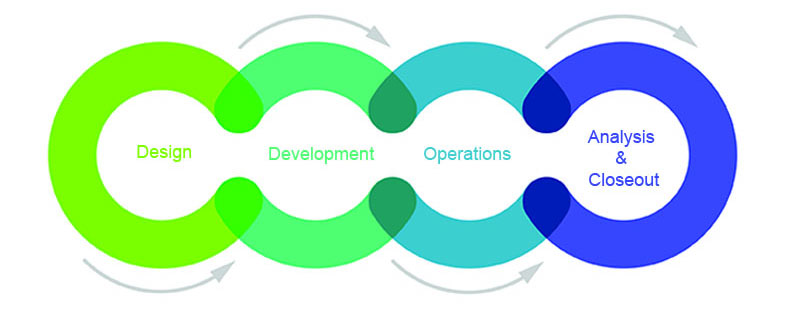Navigation | Overview
What are navigation services?
Navigation services offer a concierge-like project management, guidance, and education service designed to expedite the planning, implementation, and completion of interventional trials or trials involving experimental therapeutics that is administered by an assigned experienced ICCTR team member.
Navigation is customized to the investigator and study but uses standardized processes, tools, templates, and guidelines.
Having an expert and experienced interventional clinical research team to coordinate and integrate the appropriate resources in a structured approach can expand opportunities for — and accelerate translational research by — lowering the barriers for investigators to develop human subjects protocols and for physician scientists conducting interventional trials.
Clinical research resources and services
We do not duplicate or re-create existing resources or services; instead, the navigation team accesses and integrates existing clinical research resources and services from Boston Children's Hospital and the Harvard Catalyst that are appropriate for the study at the proper time. We abide by existing clinical research processes at Boston Children's.
We can help by:
- providing practical and comprehensive education in the principles of good clinical practice (GCP) to investigators and study teams
- providing an experienced, trained, and certified interventional trials team
- speeding IRB and other regulatory approval (i.e. FDA)
- enhancing scientific quality
Points of emphasis
There is a heavy emphasis on managing study milestones and timelines, and ongoing assessment and coordination of investigators’ timelines for grant submissions. The Navigation Team is responsible for keeping the study moving on the projected timeline by helping with:
- integration of all appropriate Boston Children's and Harvard Catalyst research resources and processes appropriate for the specific study
- investigator education about best practices in interventional trials
- customization of Navigation to the protocol and PI with standardized processes, tools, templates, and guidelines

Phases of navigation
There are four phases of navigation: Design, Development, Operations, and Analysis and Closeout. Each phase includes a range of activities in preparation for the the next phase.
Design: Concept to protocol
- specific aims
- hypothesis
- power analysis
- grant submission
- protocol design
Development: Protocol to first enrolled subjects
- IRB/FDA approval
- CRFs
- database
- manual of operations
Operations: First enrolled subjects to last visit
- screening/enrollment
- study procedures
- data collection
- safety monitoring
Analysis & Closeout Phase
- data analysis
- final funding reports
- manuscript preparation
- publication, etc
How does navigation work?
Pre-navigation
The investigator submits an electronic request for project management/navigation on the BCH internal website. Requests are reviewed at weekly leadership meetings and, if an interventional trial, it is assigned to the Navigation Team. There is a standing, appointed Navigator that shepherds the process and assigns the Navigation Team. The Navigator facilitates the PI completing a Feasibility Assessment Tool.
Pre-navigation Interventional Trials (IT) Review
The goal of the IT review is to strengthen all interventional trials conducted at BCH since they require a substantial investment of time and resources
A standing IT Review team made up of a biostatistician with expertise in interventional trials along with 3 experienced interventional trials investigators will be led by the CTSU Interim Medical Site Director.
The IT review is in addition to and not a replacement for standard scientific review that protocols undergo. Reviewers determine if the proposed interventional study is clinically relevant and methodologically sound to answer the research question/hypothesis. Specific recommendations are made to strengthen the trial.
As part of the review, the Feasibility Assessment that evaluates infrastructure requirements, funding, resources needed for implementation, risk assessment, investigator experience, population, and timeline is discussed.
Pre-navigation meeting with the PI
Initial meeting with the PI is focused on explaining how the Navigation Program works and answering questions the investigator may have. Any points of concern on the completed Feasibility Assessment with be discussed. The Navigator will deliver a scope of work and budget estimate at the meeting. If the investigator decides to proceed with the Navigation Program, a time will be arranged for them to meet with the assigned Navigation team.
Navigation begins
Work is initiated on nine work streams — associated with one of the four phases of Navigation — using standardized processes, templates, tools, and guidelines:
- finalize protocol/IRB submission
- regulatory planning
- data quality, management and security
- financial/contractual aspects
- study samples/assays/storage
- study subject safety/oversight
- staff education/training
- study launch/enrollment
- study closeout activities
The nine work streams encompass groupings of customary activities that are required for planning, implementing, and completing an investigator-initiated trial (some activities are not required if the trial is industry-sponsored).
Navigation metrics
Short-term metrics:
- Days from investigator request for Navigation to completion of Interventional Trials Review
- Days from completion of Interventional Trials Review to IRB submission
Medium-term metrics:
- Days from pre-IND meeting to IND submission
- Days from FDA IND/IDE submission to approval
- Days from FDA approval to activation (open to enrollment)
- Days from activation to first patient enrolled (enrolled = met eligibility criteria and consented)
Long-term metrics:
- Days from first patient enrolled to final patient enrolled
- Time to completion of enrollment target
- Completion of all study closeout activities
- Investigator satisfaction
Secondary metrics to be reported to Catalyst:
- Number of grants secured as result of support
- Number of publications resulting from completed study
- Number of national/international presentation resulted from study
